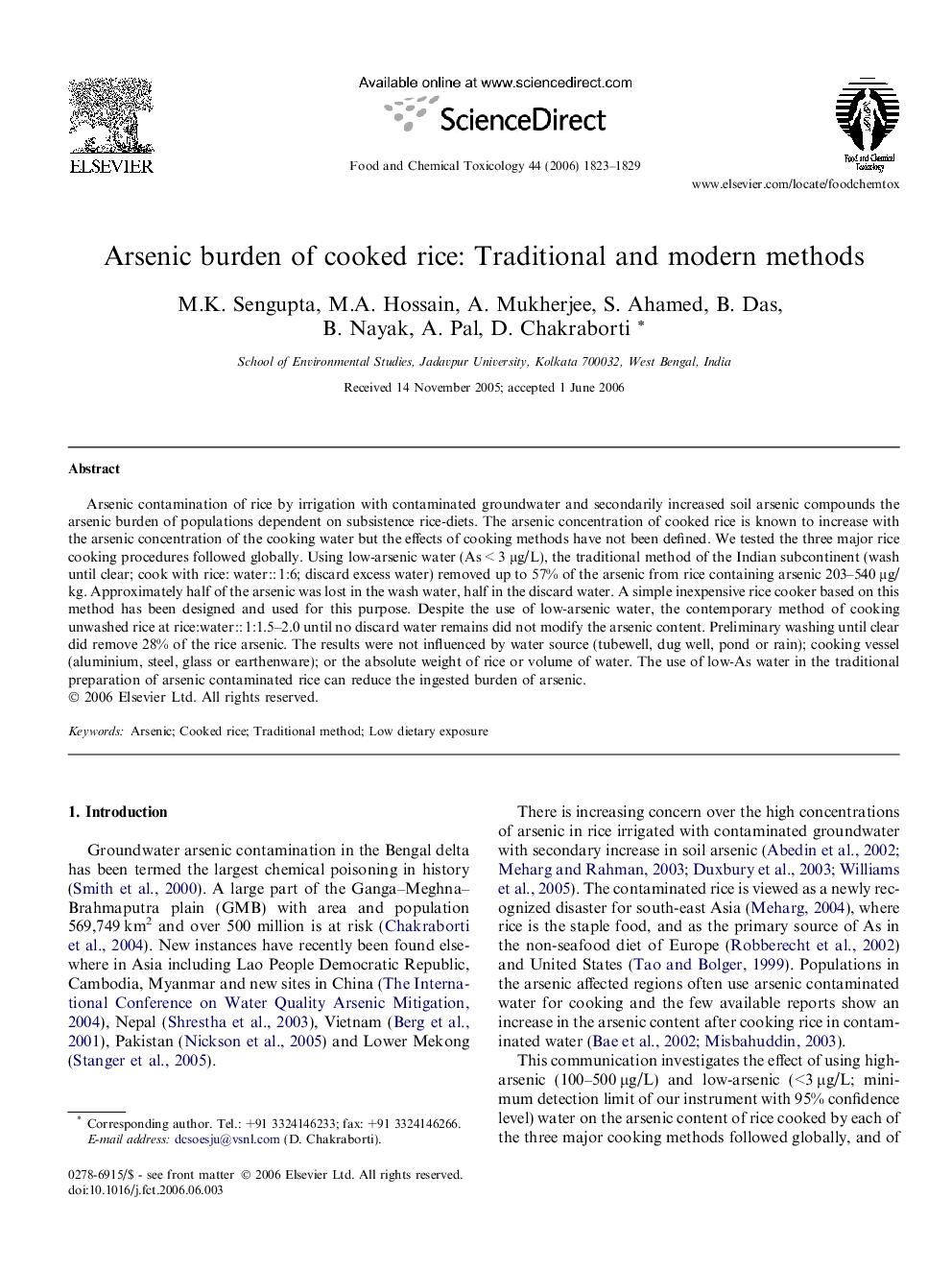| کد مقاله | کد نشریه | سال انتشار | مقاله انگلیسی | نسخه تمام متن |
|---|---|---|---|---|
| 2587207 | 1130919 | 2006 | 7 صفحه PDF | دانلود رایگان |

Arsenic contamination of rice by irrigation with contaminated groundwater and secondarily increased soil arsenic compounds the arsenic burden of populations dependent on subsistence rice-diets. The arsenic concentration of cooked rice is known to increase with the arsenic concentration of the cooking water but the effects of cooking methods have not been defined. We tested the three major rice cooking procedures followed globally. Using low-arsenic water (As < 3 μg/L), the traditional method of the Indian subcontinent (wash until clear; cook with rice: water :: 1:6; discard excess water) removed up to 57% of the arsenic from rice containing arsenic 203–540 μg/kg. Approximately half of the arsenic was lost in the wash water, half in the discard water. A simple inexpensive rice cooker based on this method has been designed and used for this purpose. Despite the use of low-arsenic water, the contemporary method of cooking unwashed rice at rice:water :: 1:1.5–2.0 until no discard water remains did not modify the arsenic content. Preliminary washing until clear did remove 28% of the rice arsenic. The results were not influenced by water source (tubewell, dug well, pond or rain); cooking vessel (aluminium, steel, glass or earthenware); or the absolute weight of rice or volume of water. The use of low-As water in the traditional preparation of arsenic contaminated rice can reduce the ingested burden of arsenic.
Journal: Food and Chemical Toxicology - Volume 44, Issue 11, November 2006, Pages 1823–1829